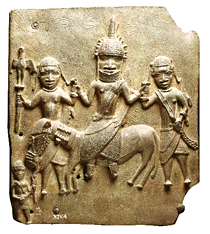DK Science: Metals
Almost three-quarters of all elements are metals, such as gold and silver. There are also some elements we may not think of as metals, such as the calcium in our bones, and the sodium in table salt (sodium chloride). Metals are defined by their METALLIC PROPERTIES, such as high melting points. Mixtures of metals are called ALLOYS. Solder is an alloy that is used to join metals in plumbing and electrical wiring. It is mainly tin with lead or silver.
Metals are classified according to where they are found in the periodic table. Each group has a set of properties that make the metals useful for different purposes.
These include potassium and sodium, and form Group I of the periodic table. They are extremely reactive metals: they react strongly with water to form strong alkalis.
These elements make up Group II of the periodic table. They combine with many elements in the Earth’s crust. Their oxides react with water to form alkalis.
This group includes copper, silver, and gold. They are hard and shiny, have high melting points, and are good conductors of heat and electricity.
Some metals, such as gold, are found naturally as pure metals in rocks. Gold is unreactive, so it does not combine with other elements. Most metals are more reactive and are found combined with other elements in rocks. Iron, for example, is usually combined with oxygen. The rocks in which metals are found are called ores.
To extract gold from its ore, huge grinders crush the ore to a fine powder. The powder is mixed with a solution of cyanide. Only the gold from the ore dissolves in the solution. Powdered zinc is added to bring the gold out of the solution. The gold is melted down and poured into moulds.
Metals are usually shiny solids with high melting points and are very good conductors of heat and electricity. They are malleable, so they can be beaten into sheets, and ductile, which means they can be drawn into wires. Most are strong and cannot be broken easily. Of course, there are exceptions: mercury, for example, is a metal that has a low boiling point and is liquid at room temperature.
The transmission lines (electric cables) that bring electricity to our homes, schools, and offices all rely on copper. Copper is a red-orange metal that is one of the best electrical conductors. Metals conduct electricity well because when metal atoms bond (join together), the electrons in their outer shells move freely. If electricity passes through one part of the metal, the electrons carry the electricity quickly to other parts.
Alloys are mixtures of metals with properties that make them more useful than pure metals. A mixture of chromium and iron resists rusting much better than iron on its own. Most alloys are made of two or more metals, but some contain a non-metal. Steel is an alloy of iron and carbon. Alloys are made by melting the different materials together. Changing the proportions of the materials can change the properties of the alloy.

Bronze is an alloy of 90 per cent copper and 10 per cent tin. Molten bronze is poured into moulds to create objects with fine detail, such as this bronze panel from north Africa. Bronze was first made 6,000 years ago from minerals containing copper and tin. This alloy is much harder than pure copper. Bronze was so widely used for so many years that this period is called the Bronze Age.
